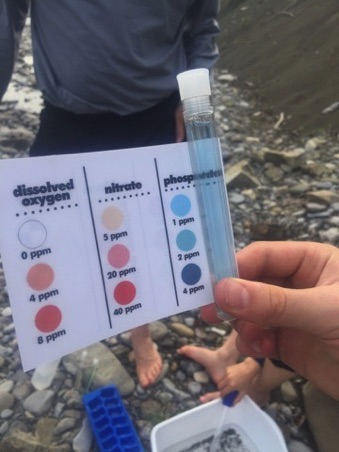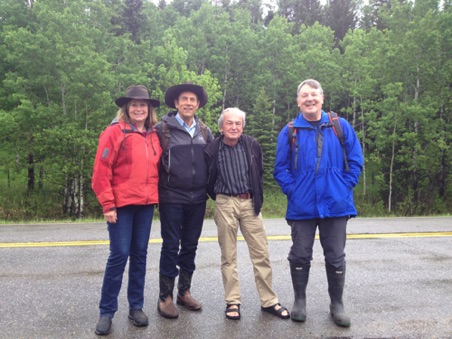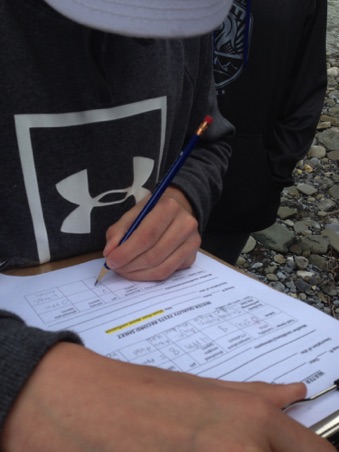
Educational Activities
Student moments
She sat on the rocks, clipboard on her knees. As she studied the scene in front of her, she sketched the cliff, the current, and the confluence. What must be happening upstream of this spot to bring down all of this sediment? Why are the Ghost and Waiparous so different?
He crouched over a white basin, intent on its contents. A stone-fly nymph was chasing a dragon-fly nymph, predator pursuing prey. What else could he find? What were those wriggling bugs in his ice cube tray? The inventory sheet sat empty. How could he find time to write anything down when there was so much to see?
The pair of students carefully timed the dissolution of the tablet in the test tube. Outfitted in safety glasses and gloves, they compare the colour in the tube with the colour guide for nitrate. What do those numbers mean? Is this river healthy?
The group took turns with the spray bottles, releasing droplets of water onto the watershed model factory and fields and watching as the flow carried the pollution (kool-aid crystals) and cow manure (instant coffee) into the lake. Gross! Draining the lake by removing the plug, they examine the mixing of the run-off. What happens when we put sponges along the creek (riparian areas) and in the headwaters (wetlands)? Let’s try it again!
Conferences
How did this all start? In February 2019, volunteers set up a booth at the Palliser District Teacher’s Convention. They connected with educators, holding a raffle for bus costs. Classroom and field visits stemmed from this initiative. GWAS also participated in the Alberta Council for Environmental Education’s (ACEE) conference in May 2019.
School Visits
GWAS volunteers brought a watershed model and wetlands tank to RancheView School in Cochrane, C.W. Perry School in Airdrie, and Twin Creeks Hutterite School. Over the course of several months, 330 students of different ages got a chance to hear about the Ghost Watershed: where it is, how it connects to other watersheds, and how land-use activities affect water quality and quantity.
Field Visits
GWAS Volunteers met with two separate school groups along the Ghost River. In May, a short presentation and hike was done with 25 students from Manachaban’s Project WILD. In June, staff and 33 students from RancheView School came to experience nature and complete water quality testing at the Waiparous Creek/Ghost River confluence.
Thank You!
GWAS directors and members volunteered many hours to connect with students in the classroom and in the field. For making all of those moments possible, many thanks go out to Heinz U., Pat B., Dave L., Bob M., Penny M., and Sharlene F.. Thanks also to the board and executive director of GWAS for their support. The BRBC, Inside Education, Trout Unlimited, Alberta Environment and Parks, and ACEE offered materials and expertise.
Report on GWAS Education Activities
February to June 2019











